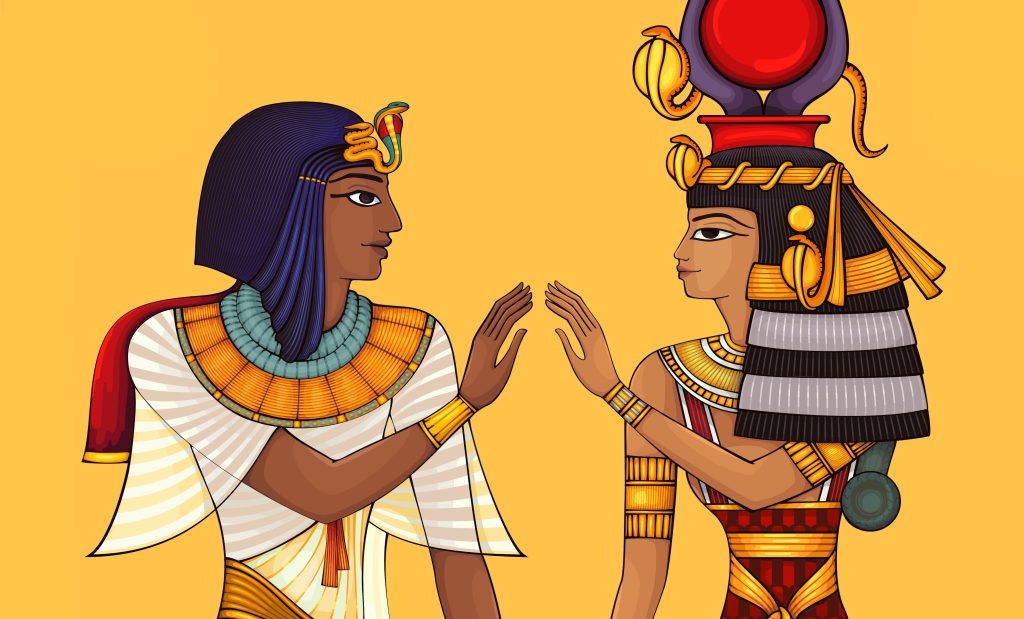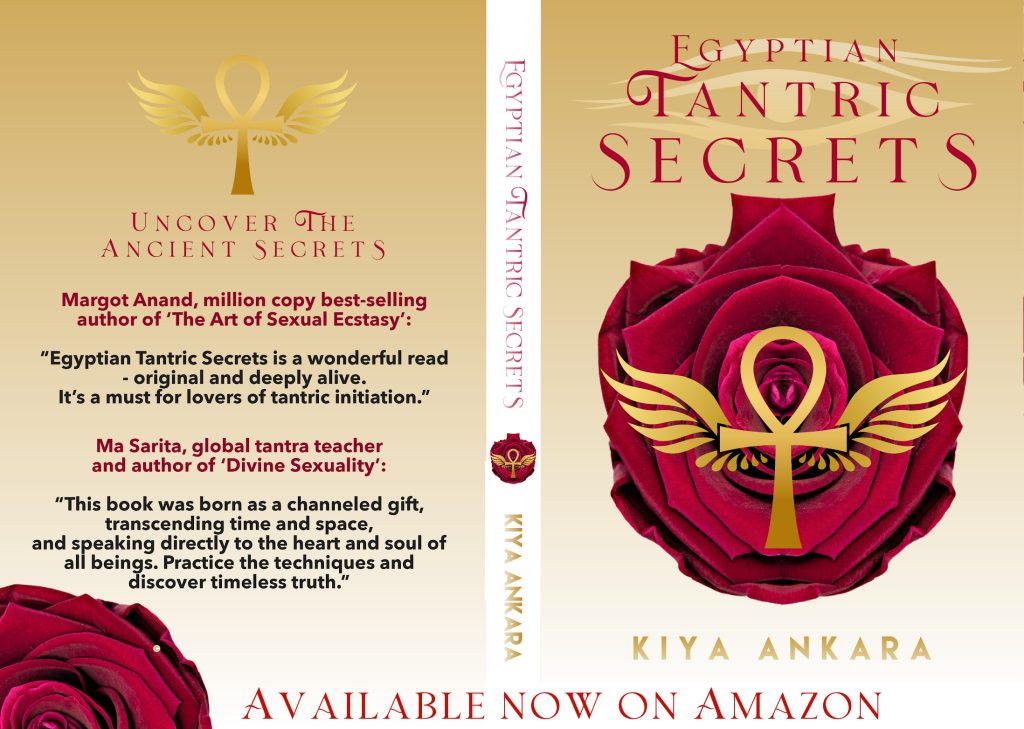
Today Tantra is synonymous with India, and the Taoist sexual arts of China. Few people know Egypt had its own unique exploration of Tantra. Much like paganism, the Roman Empire and its political agenda eventually came to suppress non-Christian teachings in Egypt over hundreds of years, and later Islamic influence continued that suppression.
First, let us understand what we mean when we say ‘tantra’. In India it means ‘to weave’ or ‘to unite’. It also denotes sacred texts. However, much within Indian classical tantra did not explore sex directly, instead it sought the inner union between Shiva and Shakti. Shiva denotes the masculine, witnessing consciousness, and Shakti the feminine life-force energy that animates all of life.
More recently neo-tantra—a modernized form of tantra—has spread throughout the world, inspired most especially by the Indian guru Osho. His extensive teachings on all spiritual traditions included an exploration of tantra. He invited people to see sex, love and spirituality as united aspects of one whole—a view so controversial he was branded ‘the sex guru’.
As Osho said:
The people who call me ‘sex guru’ are obsessed with sex. I have not talked about sex more than I have talked about meditation, love, God, prayer…
Out of my three hundred books only one book concerns sex, and that, too, not in its totality… Just the beginning of it is concerned with sex; as you go deeper in understanding it moves towards super-consciousness, towards samadhi.”
(Osho, Zen: The Special Transmission, Talk #4)
Today, when most people refer to tantra, what they are usually referring to is neo-tantra. Both classical and neo-tantra seek to divinize relationship. All is divine and seen as an expression of higher consciousness on the tantric path. It is also an alive teaching, one that changes and shifts over time. Many have suggested it cannot be found in scriptures, but only discovered as a lived, embodied experience.
Margot Anand, a Western psychotherapist, was the first teacher of tantra at Osho’s Indian ashram back in the 1970s. Since then, there has been an exponential growth of neo-tantra in the West. Why? Because we are still recovering from a sexual suppression implemented through the Roman Empire and its use of Christianity.
But how does Egypt fit into this? Egypt was a powerful civilization ruled by its own people over thousands of years. From 525 BC non-African rulers overtook the country—the name ‘Egypt’ came from the Macedonian and Ptolemaic rulers—prior to their influence, Egypt was called Kemet.
The Romans came to rule Kemet for hundreds of years, and after 313 AD, when Rome decided to become a Christian empire, they gradually began to support the spread of Christianity, including increasingly restrictive views on sexuality. They also destroyed anything that was deemed heretical or outside of the narrow Christian worldview they came to embrace.
The Muslim conquest of Egypt began in 641 AD, bringing Islam and further sexual suppression. As a result, much of the ancient tantric knowledge is now lost, including the most secretive Egyptian tantric teachings, many of which were only shared with initiates and the upper classes.
To quote Mary from ‘The Magdalen Manuscript’:
“The secrets and the holiness of our sexual natures was made evil by the Church—by the Church Fathers. And for nearly two thousand years now the most dynamic and one of the most rapid ways to God realization had been made wrong.”
The Magdalen Manuscript – The Alchemies of Horus and the Sex Magic of Isis, by Tom Kenyon and Judy Sion)
The Roman Empire came to suppress any teachings that were not deemed as aligning with the empire’s agenda—from other religious traditions but also from within Christianity itself. The Nag Hammadi scrolls, discovered in 1945, reveal a very different Christianity than the one presented to us today, one that embraced and even celebrated sexuality.
Written between the 2nd – 4th century AD these texts were deemed heretical and thus were hidden – it is believed by monks who disagreed with the political influence on the church teachings. Secreted away in a cave in the Egyptian desert, they were accidentally rediscovered 1600 years later. One of the texts, ‘The Gospel of Philip’ spoke clearly of the relationship between Jesus and Mary Magdalene:
The companion of the saviour is Mary Magdalene. But Christ loved her more than all the disciples and used to kiss her often on the mouth. The rest of the disciples were offended by it and expressed disapproval.”
(The Gospel of Philip – Jesus, Mary Magdalene and the Gnosis of Sacred Union, by Jean-Yves Leloup)
Within that single paragraph, we see both a love relationship and the disapproval of that relationship by those around them. As we stand now in the 21st century, we are still recovering from a sexual, spiritual repression that runs deep through many cultures and societies around the world.
As a result, today we see the return of tantra, goddess worship, and other aspects that were once outlawed—and at times violently oppressed. Along with these teachings, the tantric teachings once known within Egypt are also ready to return, to serve humanity and support an elevation of consciousness.
It is time for the Egyptian Tantric Secrets to return.
Kemet left a great spiritual legacy of wisdom for the world. Whilst some of that knowledge is lost, a significant amount lives on—in pyramids and temples, hieroglyphs and papyrus, metalwork and stone. Consider for a moment the incredible architectural achievements—the pyramids being the most obvious example – which modern architects admit they could not replicate to the same degree of accuracy – as Graham Hancock revealed in Fingerprints of the Gods. With their understanding of the stars, constellations, and their use of the golden mean in their buildings, it is obvious their understanding was advanced. This also extends into their spiritual wisdom.
Looking closer at the hieroglyphs you can see that yogic teachings were explored within Egypt. Some suggest it may even pre-date the yoga that emerged from India. PhD scholar and Egyptian yoga expert Muata Ashby is one of the few authors bringing knowledge of Egyptian tantric yoga back into wider public awareness:
Having originated in pre-dynastic times, Tantrism is found in the earliest hieroglyphic texts (c.5,000 B.C.E.) and in all phases of Ancient Egyptian religion thereafter. Tantrism existed in India in pre-Vedic times (before 1,500 B.C.E.) and it developed as a distinct tradition within Hinduism, Buddhism and Jainism.”
(Quote from Sacred Sexuality – Ancient Egyptian Tantric Yoga by Muata Ashby)
Can we ever know how old tantra really is? It likely dates back to an era of pre-history for which there is little evidence, and since it was so often passed from master to initiate directly, it is hard to prove its true origin. Tantric teachings were held secretively in many cultures—as the Taoist sexual arts reveal to us. Once taught to the Emperors of China and their inner circle, Mantak Chia was one of the first to share these sexual secrets with the Western world, despite coming from a Taoist lineage that closely guarded this knowledge.See ‘The Multi-Orgasmic Man’ by Mantak Chia for the full download.
As the book ‘Sexual Secrets’ by Nik Douglas and Penny Slinger reveals, there is evidence of tantric wisdom across many cultures throughout the world, each with their own unique teachings and perspectives.
Through my book Egyptian Tantric Secrets, I immerse deeper into Egyptian Tantra—and explore how they worked with the Ankh as part of that tantric wisdom. Through this journey, you come to learn how you can work with this ancient technology, within your spiritual live and your love life, so as to expand into higher states of consciousness. It truly is a mind-expanding, consciousness elevating journey for anyone to go on, either flying solo or within relationship.
Check out the book if you feel the call.

